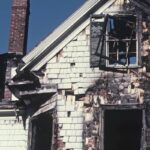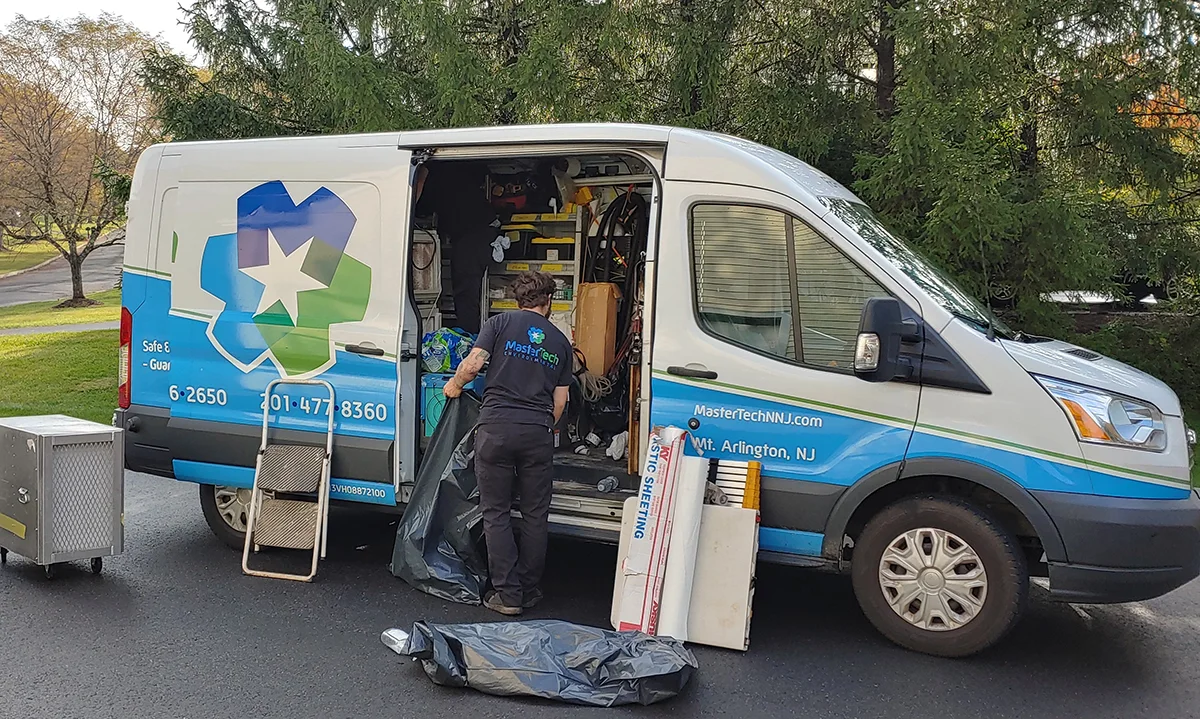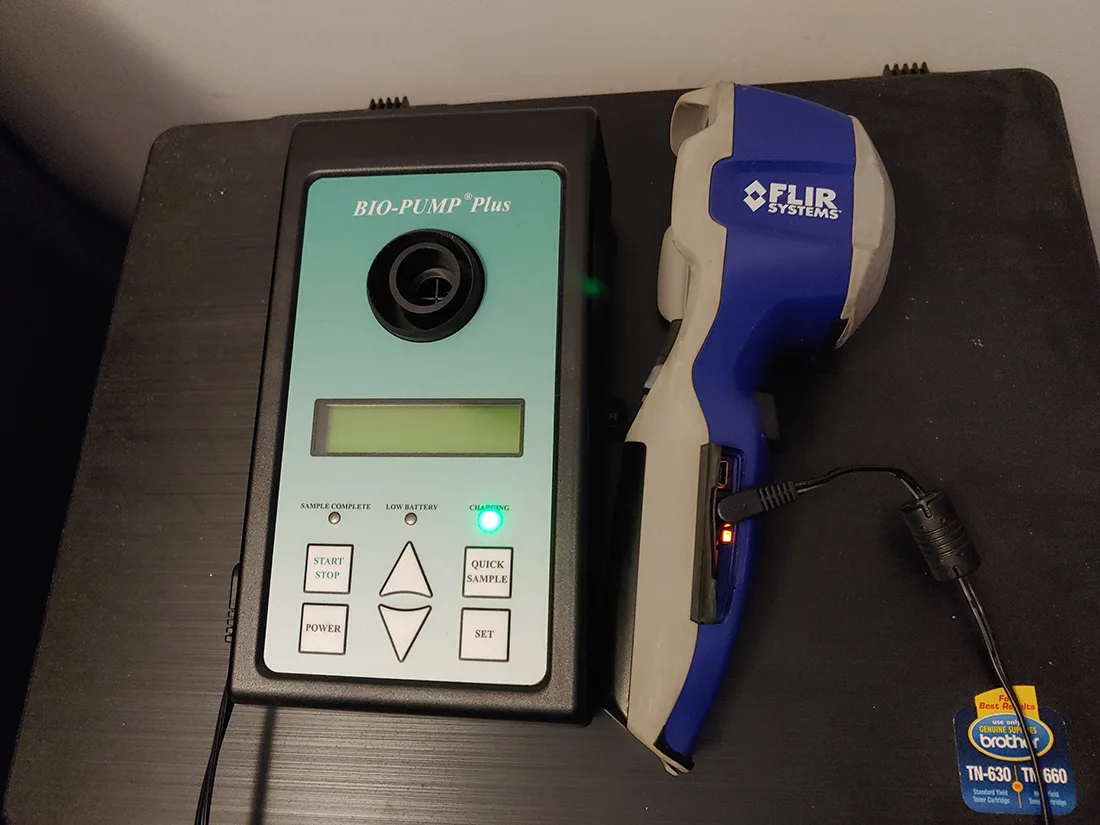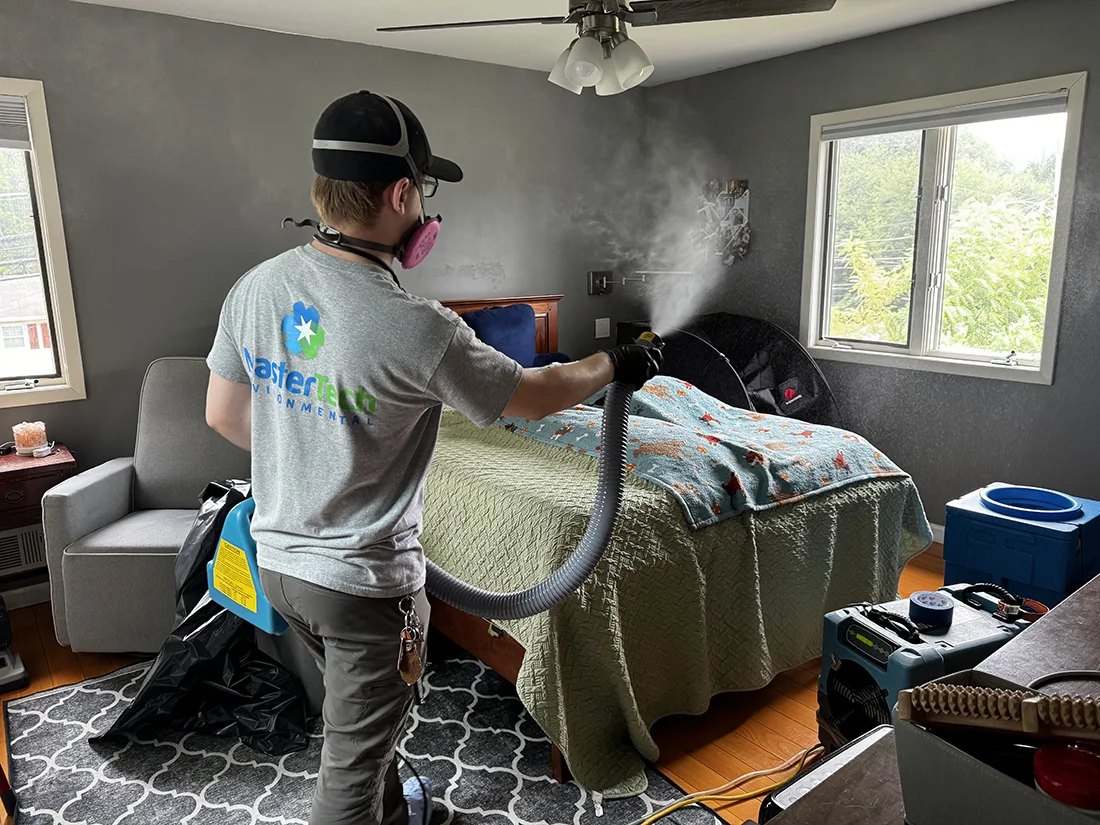Emergency situations involving mold, water, fire, trauma, death, or hoarding damage require immediate and expert cleanup to prevent further harm and property loss. Professional restoration services in Orange County, CA, specialize in handling these sensitive and complex situations with certified and trained technicians. Their expertise ensures thorough decontamination and recovery, protecting both health and property.
Each type of damage presents unique challenges, from hazardous mold growth to biohazard cleanup after a trauma or death scene. Specialists use advanced equipment and follow strict safety protocols to restore affected areas efficiently and discreetly. This level of service is essential to meet the diverse needs of both residential and commercial properties in the region.
Orange County residents and businesses can rely on expert emergency cleanup providers to address these critical issues promptly and effectively. Understanding the scope and professional standards of such services helps prepare individuals for swift action during these stressful events. For more detailed information, visit restoration experts like Code 3 Restoration and Decon or ServiceMaster EMT.
Understanding Emergency Cleanup Services
Emergency cleanup services address complex and hazardous situations involving mold, water, fire, trauma, death, and hoarding damage. These services require specialized knowledge, equipment, and rapid action to manage health risks and restore affected properties safely.
Scope of Emergency Damage Cleanup
Emergency cleanup covers a range of damage types. Water damage includes standing water removal, drying, and mold prevention. Fire damage cleanup involves soot removal, odor control, and structural repairs. Trauma and death scenes need biohazard removal, specialized sanitation, and psychological sensitivity.
Hoarding cleanup often requires clearing clutter, addressing structural risks, and handling waste like animal excrement or spoiled food. Each type of emergency service involves detailed protocols to ensure complete restoration and safety. Comprehensive restoration often combines multiple services depending on damage extent.
Importance of Immediate Response
Immediate intervention is critical to prevent secondary damage. For water incidents, delays can lead to mold growth within 24 to 48 hours. Fire damage left untreated allows soot and smoke to cause ongoing degradation and odors.
Trauma and death scene cleanup demand fast action to limit biohazard exposure and preserve safety. Delays increase health risks and complicate restoration efforts. Prompt service also supports faster insurance claims and minimizes business or home disruption.
Health and Safety Risks
Emergency damage environments contain multiple hazards. Mold exposure can cause respiratory issues and allergic reactions. Water damage often brings bacteria and pathogens, especially with sewage or standing water.
Fire damage exposes occupants to toxic smoke residues and unstable structures. Trauma and death scenes present biohazards like bloodborne pathogens that require certified technicians and protective gear.
Safety protocols include contamination containment, personal protective equipment (PPE), and thorough sanitation. Understanding and managing these risks is essential to protect occupants, cleanup workers, and the property itself.
For professional restoration addressing complex water damage, trauma scene cleanup, and hoarding cleanup, experienced teams provide critical support and hazard control in Orange County.
Mold Damage Cleanup in Orange County, CA
Mold damage poses specific risks to health and property, especially in areas like kitchens and living rooms where moisture is common. Proper cleanup requires addressing safety concerns, minimizing hazardous conditions, and supporting the mental health of occupants affected by mold contamination.
Causes and Common Sources of Mold
Mold growth primarily results from excess moisture and poor ventilation. In Orange County homes, common sources include leaks in plumbing, roof damage, and condensation in kitchens and bathrooms. Flooding or water seepage can also create an environment conducive to mold.
Hidden mold behind walls or under flooring often goes unnoticed, posing ongoing risks. Mold thrives on organic materials such as drywall, wood, and fabrics. Without timely intervention, mold can spread rapidly, increasing health hazards and structural damage.
Professional Mold Remediation Process
Effective mold remediation begins with a thorough inspection to identify affected areas and moisture sources. Technicians use specialized equipment to contain the mold, preventing spores from spreading to other rooms.
The process includes removing mold-infested materials, cleaning surfaces with antimicrobial agents, and drying the area completely. Workers wear protective gear to ensure safety during cleanup. Support for occupants is crucial during this stage, addressing any mental health concerns related to mold exposure.
Restoration teams also repair moisture sources to prevent recurrence. Using professionals reduces hazardous conditions compared to DIY methods, which may worsen the problem.
Preventing Recurring Mold Issues
Prevention focuses on controlling humidity and moisture levels indoors. Installing exhaust fans in kitchens and bathrooms can improve ventilation. Regularly inspecting plumbing and roofs helps catch leaks early.
Maintaining indoor relative humidity below 60% using dehumidifiers is effective. Homeowners should promptly clean and dry spills or water damage. Keeping living spaces free from clutter supports airflow and reduces potential mold habitats.
Self care after mold remediation includes regular monitoring for signs of mold return and maintaining safe conditions in all rooms, particularly damp-prone areas.
Impact on Indoor Air Quality
Mold releases spores and volatile organic compounds that degrade indoor air quality. This can lead to respiratory issues, allergic reactions, and irritations, especially for sensitive individuals.
Contaminated air is a hazard in living rooms and bedrooms where people spend much time. Improving airflow and using air purifiers with HEPA filters can reduce airborne mold particles.
Addressing mold promptly prevents prolonged exposure and supports overall occupant safety. Maintaining clean air quality is crucial for physical health and mental well-being in affected households.
For professional assistance with mold cleanup and restoration in Orange County, consider contacting a local expert in water damage restoration and mold remediation.
Water Damage Restoration Solutions
Effective water damage restoration involves pinpointing leak sources, removing water promptly, and repairing any structural damage. Safety and preventing mold growth are critical throughout the process.
Identifying Water Intrusion Points
Professionals start by examining common entry points such as kitchen and bathroom plumbing, foundation cracks, and damaged roofing. They also check around windows, doors, and any area vulnerable to wildlife intrusion that could compromise building integrity.
Advanced moisture detection tools help locate hidden leaks behind walls or under floors. Early identification prevents further damage to living areas and supports quicker restoration.
Water Extraction and Drying
Removing standing water quickly is vital to protect floors, furniture, and personal belongings. Technicians use high-capacity pumps and industrial-grade vacuums to extract water from carpets, tiles, and hardwood.
After extraction, they deploy specialized drying equipment like dehumidifiers and air movers throughout the affected space. This targeted drying helps prevent mold growth and preserves indoor air quality, supporting occupant health and self-care.
Structural Repairs and Decontamination
Once thoroughly dried, structural repairs begin to restore walls, floors, and ceilings to safe conditions. This may include replacing drywall, reinforcing weakened supports, and treating surfaces for microbial contamination.
Decontamination is crucial, especially if water damage involves sewage or wildlife intrusion. Professionals use EPA-approved antimicrobials to sanitize affected areas to mitigate health risks and ensure a safe living environment. For comprehensive assistance, see Orange County Damage Restoration Services.
Fire Damage Remediation and Recovery
Fire damage remediation involves a detailed evaluation of structural harm and contamination caused by fire and smoke. This process requires specialized techniques to restore safety, remove hazardous soot, and eliminate persistent odors to make properties livable again.
Assessing Fire and Smoke Damage
The first step is a thorough inspection to identify the extent of fire and smoke damage. Professionals check structural elements such as walls, ceilings, and floors for weakening or charring. Electrical systems receive special attention due to fire-related hazards.
Safety is critical during assessment. Technicians must wear personal protective equipment and follow local regulations, including the Americans with Disabilities Act (ADA) when accessing or assisting affected individuals with disabilities.
Documentation of damage includes photos and detailed notes to support insurance claims and guide restoration. Areas with compromised air quality due to smoke penetration are also identified for remediation.
Soot and Odor Removal Techniques
Soot can be corrosive and pose health risks, requiring careful cleaning with dry or wet sponges, chemical agents, or abrasive methods depending on surface type. HVAC systems must be cleaned to prevent recirculation of soot particles.
Odor removal typically uses equipment like ozone generators or thermal foggers to neutralize smoke smells. Ventilation and air filtration play a major role in clearing persistent odors while ensuring compliance with safety standards.
Special cleaning products ensure the removal of embedded particles without damaging surfaces. Continuous monitoring of air quality in affected buildings helps confirm that soot and odor elimination is complete and that it meets health and safety guidelines.
For professional fire damage restoration in Orange County, reliable experts are available through ServiceMaster Restore and other local certified providers.
Trauma and Death Scene Cleanup
Trauma and death scene cleanup involves careful attention to emotional sensitivity, removal of hazardous materials, and strict adherence to legal standards. Professionals handle potentially infectious substances and ensure environments are safe for future use while respecting the dignity of those affected.
Sensitive Handling and Discretion
Cleanup teams work discreetly to protect the dignity and privacy of victims and their families. They understand the emotional toll and maintain professionalism at all times.
Mental health support is often recommended during and after cleanup to help those affected cope with trauma. Clear communication and empathy are essential to reducing distress for family members and property owners.
Technicians are trained to operate with confidentiality and avoid unnecessary exposure of the scene to neighbors or media. This sensitive handling helps maintain respect for all parties involved.
Biohazard Removal and Sanitation
Trauma scenes often include biological hazards such as bloodborne pathogens including HIV. Certified teams follow protocols to safely remove and dispose of hazardous materials, following EPA and OSHA guidelines.
Sanitation involves thorough cleaning, chemical disinfection, and use of protective gear to prevent cross-contamination. Technicians address porous materials that may require removal to eliminate infectious risks effectively.
Efficient cleanup reduces the chance of hazardous conditions affecting future occupants. The process includes decontaminating surfaces and ensuring air quality meets safety standards before the property is cleared for use.
Regulatory Compliance in California
Work performed in Orange County aligns with California-specific regulations governing biohazard cleanup. Companies must comply with state health codes, waste disposal laws, and occupational safety requirements.
Licensing and certification ensure cleanup teams meet all regulatory standards, protecting both workers and residents. Documentation of cleanup activities is maintained to support any legal or insurance claims.
Compliance includes adhering to guidelines on hazardous waste transport and disposal. Proper handling prevents environmental contamination and legal penalties, ensuring cleanup is both effective and lawful.
For professional trauma and death scene cleanup in Orange County, companies like ServiceMaster EMT and Bio-One of Poway provide certified expertise with a focus on safety and discretion.
Hoarding Cleanup and Restoration
Hoarding cleanup in Orange County requires a careful balance of practical restoration and emotional sensitivity. The process includes identifying hoarding behaviors, ensuring safety during decluttering, addressing mental health needs, and establishing measures to prevent recurrence. Each stage is crucial for a successful and lasting cleanup.
Recognizing Hoarding Disorder
Hoarding is a recognized mental health problem characterized by persistent difficulty discarding possessions, leading to excessive clutter. It often affects key areas like the living room and kitchen, impairing their usability and creating health hazards.
Signs include accumulation that disrupts daily living, distress when discarding items, and isolation due to embarrassment. Understanding hoarding as a disability under the Americans with Disabilities Act helps promote patience and respect toward affected individuals. Proper recognition is the foundation for effective cleanup and supportive intervention.
Safe Decluttering Practices
Decluttering a hoarded space demands strict safety protocols to protect both workers and occupants. Professionals use protective gear and assess the environment for biohazards like mold, pests, or structural instability.
Cleanup often follows a staged plan: sorting items into categories, careful removal of waste, and deep cleaning. The process avoids rushing, emphasizing patience and respect for the individual’s attachment to their belongings. Specialized restoration teams ensure the living room, kitchen, and other areas are restored to safe, functional conditions.
Mental Health and Emotional Support
Addressing the mental health aspects is integral to hoarding cleanup. Individuals often require emotional support to cope with loss and change during the process. Collaboration with therapists or social workers may accompany cleanup efforts.
Gentle communication and respect for self care needs reduce stress and resistance. Providing resources and ongoing support enables individuals to maintain improvements. Recognizing hoarding as a complex condition encourages empathy and better outcomes.
Long-Term Prevention Strategies
Sustaining a clutter-free environment depends on practical and psychological strategies. Education about hoarding disorder and early intervention are key preventive measures.
Implementing routine cleaning schedules, organizing resources, and fostering a support network help maintain order. Ongoing mental health care and community support reinforce progress. Such strategies reduce the likelihood of returning to hazardous hoarding conditions, preserving the safety and usability of living areas.
Professionals like ServiceMaster EMT offer specialized hoarding cleanup services in Orange County designed to address these needs comprehensively.
Why Choose Professional Emergency Cleanup in Orange County
Choosing the right emergency cleanup service requires attention to both qualifications and local responsiveness. Professionals who are certified have access to proven cleaning techniques and equipment, while local expertise ensures prompt service tailored to the community’s specific challenges.
Certified and Experienced Professionals
Certified cleanup teams follow strict protocols to handle hazardous materials safely and effectively. They are trained in specialized areas such as mold remediation, biohazard removal from trauma and death scenes, and fire damage restoration. This expertise minimizes risks of health complications and property damage during cleanup.
Certification from recognized bodies guarantees adherence to industry standards. It also means cleanup technicians stay updated on evolving techniques and regulations. For instance, handling hoarding situations with a supportive approach requires skills beyond basic cleaning, focusing on client well-being as well.
Emergency cleanup providers in Orange County often collaborate with local agencies to ensure compliance and thorough decontamination. This professional recognition is essential for restoring spaces properly and safely.
Local Expertise and Response Times
Local cleanup companies understand Orange County’s unique environmental and urban conditions. They are familiar with common issues such as water damage from coastal humidity or fire hazards near suburban areas. This knowledge allows them to act swiftly and apply the most effective solutions.
Fast response times are critical in emergency situations to prevent further damage or contamination. A nearby team can often arrive within hours, reducing the chances of mold growth or structural decay.
Locally based companies support the Orange County community by offering ongoing support during remediation. They also navigate local regulations efficiently, providing peace of mind that cleanup meets legal and safety standards.
Orange County services commonly serve diverse environments, from residential neighborhoods to busy metropolitan areas, ensuring tailored cleanup approaches for each situation.
Frequently Asked Questions
Emergency damage cleanup requires immediate actions to prevent further property loss. Proper procedures vary depending on the type of damage but generally focus on safety, containment, and thorough remediation.
What are the steps to take immediately after water damage occurs?
The first step is to stop the water source if possible. Next, remove valuable items and begin drying the area to prevent mold growth.
It is important to contact professionals quickly for water extraction and to assess structural damage. Delays can cause permanent damage and health risks.
How do professionals remediate mold following a water leak?
Professionals inspect the affected area for moisture and mold presence. They then contain the area to prevent spores from spreading.
They remove damaged materials and use specialized cleaning agents to kill mold. Drying and dehumidification follow to ensure no moisture remains.
What are the best practices to restore a home after fire damage?
The process involves assessing structural safety and removing soot, smoke, and debris. Professionals often use air scrubbers and deodorizers to improve air quality.
Repairs may include replacing drywall, flooring, and HVAC cleaning. Restoration aims to return the home to pre-fire condition while addressing health hazards.
What is involved in cleaning a property after a traumatic event?
Cleaning includes biohazard removal and sanitizing surfaces to eliminate health risks. Specialists wear protective gear and carefully dispose of contaminated materials.
The process also involves deodorization and restoration to make the environment safe and livable again.
What are the guidelines for cleaning up a hoarding situation?
Hoarding cleanup requires sorting and removing large volumes of clutter carefully. This often involves waste disposal according to local regulations.
Cleaning and sanitizing follow removal to address odors and biohazards. The process may require coordination with mental health professionals.
How long does it typically take to clean and restore a property after damage?
Time frames vary widely depending on damage extent. Minor water damage may take a few days, while fire or trauma cleanup can require weeks.
Complex cases involving mold or hoarding often extend restoration time due to thorough decontamination and repairs necessary.









